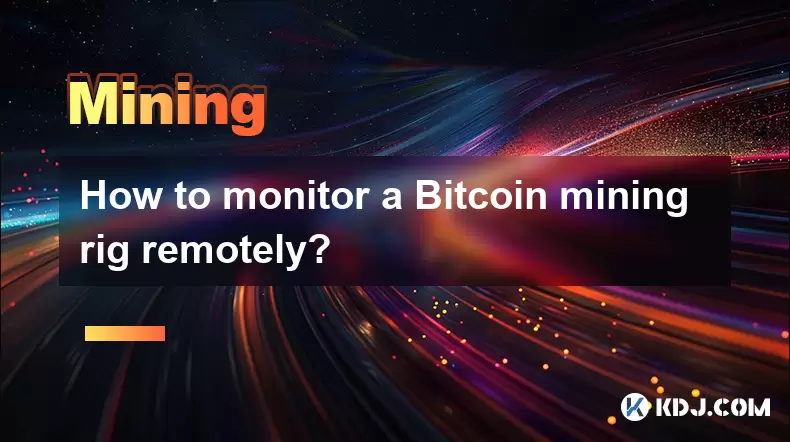-
 Bitcoin
Bitcoin $117,272.7457
1.45% -
 Ethereum
Ethereum $2,938.4907
0.32% -
 XRP
XRP $2.7050
7.14% -
 Tether USDt
Tether USDt $1.0003
0.03% -
 BNB
BNB $688.4019
0.08% -
 Solana
Solana $162.0506
-0.53% -
 USDC
USDC $0.9999
0.01% -
 Dogecoin
Dogecoin $0.1981
2.75% -
 TRON
TRON $0.3014
2.68% -
 Cardano
Cardano $0.7006
4.22% -
 Hyperliquid
Hyperliquid $45.7987
5.26% -
 Sui
Sui $3.3641
-1.74% -
 Stellar
Stellar $0.3530
17.81% -
 Bitcoin Cash
Bitcoin Cash $526.1849
1.91% -
 Chainlink
Chainlink $15.0782
-0.24% -
 Avalanche
Avalanche $20.4108
-1.04% -
 UNUS SED LEO
UNUS SED LEO $9.0974
0.64% -
 Hedera
Hedera $0.1908
0.86% -
 Shiba Inu
Shiba Inu $0.0...01307
-0.71% -
 Toncoin
Toncoin $2.9472
0.65% -
 Litecoin
Litecoin $93.4465
-0.72% -
 Polkadot
Polkadot $3.8633
0.76% -
 Monero
Monero $331.7195
1.21% -
 Uniswap
Uniswap $8.6299
3.44% -
 Dai
Dai $0.9997
-0.01% -
 Ethena USDe
Ethena USDe $1.0005
0.00% -
 Bitget Token
Bitget Token $4.5000
-1.64% -
 Pepe
Pepe $0.0...01213
-0.55% -
 Aave
Aave $293.9403
-3.56% -
 Bittensor
Bittensor $388.7816
4.71%
How to monitor a Bitcoin mining rig remotely?
Remote Bitcoin mining rig monitoring allows you to track performance, temperature, and hash rate from anywhere using tools like Awesome Miner or Minerstat, ensuring optimal efficiency and quick issue resolution.
Jul 12, 2025 at 09:36 am

Understanding the Basics of Remote Bitcoin Mining Rig Monitoring
Monitoring a Bitcoin mining rig remotely involves using specialized tools and techniques to keep track of your mining hardware's performance, temperature, hash rate, power consumption, and overall health without being physically present. This capability is crucial for miners who manage multiple rigs or operate in remote data centers.
To begin with, it's essential to understand that remote monitoring relies on network connectivity, mining software compatibility, and secure access protocols. Most modern mining rigs run on operating systems like Awesome Miner, CGMiner, or BFGMiner, which can be configured for remote access through SSH (Secure Shell), VNC (Virtual Network Computing), or dedicated cloud-based platforms.
Setting Up Your Mining Rig for Remote Access
Before you can monitor your rig from afar, you must configure it for remote interaction. Here’s how:
- Ensure your mining rig is connected to a stable internet source.
- Assign a static IP address to your mining rig within your local network.
- Enable SSH access if you're using a Linux-based OS like Ubuntu or Raspbian.
- Install and configure remote desktop tools such as VNC Server or TeamViewer if GUI access is necessary.
- Open the appropriate ports (typically port 22 for SSH) on your router and set up port forwarding.
Once these steps are completed, you'll be able to connect to your mining rig from any location with internet access. It’s also important to use strong passwords and enable two-factor authentication (2FA) where possible to prevent unauthorized access.
Choosing the Right Monitoring Software
There are several monitoring software options available for remote management of Bitcoin mining rigs. Each has its own set of features tailored to different user needs:
- Awesome Miner: Offers a centralized dashboard for managing multiple rigs, supports both Windows and Linux, and includes alert notifications.
- Minerstat: A cloud-based platform that allows real-time monitoring and control over your mining operations.
- NiceHash Stats: Provides insights into your mining profitability and performance metrics.
- CGWatcher: A lightweight tool designed specifically for CGMiner and BFGMiner users.
- PiMiner Dashboard: Ideal for Raspberry Pi-based mining setups.
Each of these tools requires some level of configuration to integrate with your mining rig. For instance, Awesome Miner can be installed directly on the mining machine or accessed via a web browser after setting up a server.
Configuring Real-Time Alerts and Notifications
One of the most valuable aspects of remote monitoring is the ability to receive real-time alerts when something goes wrong. Whether it's a sudden drop in hash rate, overheating, or power failure, timely notifications can help you take corrective action before significant losses occur.
To set this up:
- Configure email alerts within your monitoring software.
- Integrate with Telegram bots or Discord webhooks for instant messaging notifications.
- Use IFTTT (If This Then That) to create applets that trigger actions based on specific events.
- Enable SMS alerts if supported by your mining platform or hosting service.
For example, Minerstat allows you to set thresholds for temperature, uptime, and hashrate deviations, automatically sending alerts via email or Telegram whenever these parameters are exceeded.
Securing Your Remote Monitoring Setup
Security is paramount when dealing with remote access systems. Since your mining rig contains sensitive financial data and operational controls, securing your setup should not be overlooked.
Here are some best practices:
- Use SSH keys instead of passwords for logging in remotely.
- Change default login credentials immediately after installation.
- Set up a firewall on your mining rig to restrict unnecessary incoming connections.
- Regularly update your operating system and mining software to patch vulnerabilities.
- Consider using a VPN (Virtual Private Network) to add an extra layer of encryption between your device and the mining rig.
For added security, you can also install fail2ban, a tool that monitors log files and bans suspicious IP addresses attempting brute-force attacks.
Troubleshooting Common Issues Remotely
Even with a well-configured setup, issues can arise that require immediate attention. Here are some common problems and how to resolve them remotely:
- Rig not responding: Check the network connection, restart the mining software via SSH, or reboot the rig remotely.
- Low hash rate: Inspect pool settings, verify worker status, and ensure no throttling due to high temperatures.
- Overheating: Adjust fan speeds, check airflow, or reduce intensity settings in your mining software.
- Pool disconnects: Verify your internet stability and reconfigure the mining pool URL and worker credentials if needed.
Tools like Awesome Miner allow you to execute commands across multiple rigs simultaneously, making troubleshooting more efficient.
Frequently Asked Questions
Can I monitor my Bitcoin mining rig using a mobile device?
Yes, many remote monitoring tools offer mobile apps or responsive web interfaces that allow you to view and manage your mining rig from smartphones or tablets.
Is it possible to monitor ASIC miners remotely?
Absolutely. ASIC miners like Antminer or WhatsMiner can be monitored via their built-in web interfaces or integrated into platforms like Minerstat or Awesome Miner for advanced tracking.
What should I do if my mining rig becomes inaccessible remotely?
Check your internet connection, ensure the mining rig is powered on, and verify that port forwarding rules are correctly applied. If SSH access fails, consider using a remote power switch or contacting your hosting provider.
Do I need a static public IP address to monitor my mining rig remotely?
While having a static public IP simplifies remote access, you can also use dynamic DNS services like No-IP or DuckDNS to maintain consistent access even if your IP changes.
Disclaimer:info@kdj.com
The information provided is not trading advice. kdj.com does not assume any responsibility for any investments made based on the information provided in this article. Cryptocurrencies are highly volatile and it is highly recommended that you invest with caution after thorough research!
If you believe that the content used on this website infringes your copyright, please contact us immediately (info@kdj.com) and we will delete it promptly.
- Bitcoin, BTCFi, and Neutrality: Why It Matters Now More Than Ever
- 2025-07-12 12:30:12
- Polkadot's Cross-Chain Evolution: Technical Upgrades and Market Momentum
- 2025-07-12 12:50:12
- Pi Crypto, Coin Price, and Analysis: Riding the Bitcoin Wave or a Flash in the Pan?
- 2025-07-12 12:50:12
- Bitcoin Blows Past $118K: ETFs Fuel All-Time High!
- 2025-07-12 13:10:12
- Bitcoin Blasts Past All-Time High: Is This Surge Sustainable?
- 2025-07-12 13:10:12
- Hyperlane's Crypto Surge & Exchange Listings: What's the Hype?
- 2025-07-12 12:30:12
Related knowledge

How to update Dogecoin miner software
Jul 12,2025 at 12:36pm
Understanding Dogecoin Mining and the Need for Software UpdatesDogecoin mining involves using specialized software to validate transactions on the Dog...

Overclocking settings for Dogecoin mining
Jul 12,2025 at 12:57pm
Understanding Overclocking in Dogecoin MiningOverclocking refers to the process of increasing the clock rate of a component—typically a GPU or CPU—bey...

How do Bitcoin mining pools prevent cheating?
Jul 12,2025 at 10:36am
Understanding the Role of Mining Pools in BitcoinBitcoin mining pools are collaborative groups where multiple miners combine their computational resou...

How to report Bitcoin mining income on taxes?
Jul 12,2025 at 11:01am
Understanding Bitcoin Mining and Tax ObligationsBitcoin mining involves validating transactions on the blockchain and receiving rewards in the form of...

How to monitor a Bitcoin mining rig remotely?
Jul 12,2025 at 09:36am
Understanding the Basics of Remote Bitcoin Mining Rig MonitoringMonitoring a Bitcoin mining rig remotely involves using specialized tools and techniqu...

What is the most energy-efficient Bitcoin miner?
Jul 12,2025 at 12:29pm
Understanding Energy Efficiency in Bitcoin MiningBitcoin mining requires significant computational power, which translates to high energy consumption....

How to update Dogecoin miner software
Jul 12,2025 at 12:36pm
Understanding Dogecoin Mining and the Need for Software UpdatesDogecoin mining involves using specialized software to validate transactions on the Dog...

Overclocking settings for Dogecoin mining
Jul 12,2025 at 12:57pm
Understanding Overclocking in Dogecoin MiningOverclocking refers to the process of increasing the clock rate of a component—typically a GPU or CPU—bey...

How do Bitcoin mining pools prevent cheating?
Jul 12,2025 at 10:36am
Understanding the Role of Mining Pools in BitcoinBitcoin mining pools are collaborative groups where multiple miners combine their computational resou...

How to report Bitcoin mining income on taxes?
Jul 12,2025 at 11:01am
Understanding Bitcoin Mining and Tax ObligationsBitcoin mining involves validating transactions on the blockchain and receiving rewards in the form of...

How to monitor a Bitcoin mining rig remotely?
Jul 12,2025 at 09:36am
Understanding the Basics of Remote Bitcoin Mining Rig MonitoringMonitoring a Bitcoin mining rig remotely involves using specialized tools and techniqu...

What is the most energy-efficient Bitcoin miner?
Jul 12,2025 at 12:29pm
Understanding Energy Efficiency in Bitcoin MiningBitcoin mining requires significant computational power, which translates to high energy consumption....
See all articles
























































































